Sorry for the late post guys- my weekend was crazy and it seems as though I never stop going. I am sure all of you can relate. But my goal is to alway find an hour of peace and quiet each day and relax my brain with a book or yoga...something to turn off the craziness! Over the years, I have learned that stress is the root of all evil and can seriously cause many distubances in the body...so you have to switch gears and learn to chill out. Here is an article that supports the importance of balancing stress, sleep and nutrition...
Chronic Stress and the Sleep-Stress Cycle
Compared to this kind of acute stress, a bad job or a looming term paper seems like small fry. If your system can handle the shock of nearly running someone over, can’t it deal with a micromanaging boss? Not as well, unfortunately. The problem stems from a mismatch between the kind of stress you face and the kind of stress your body thinks you’re facing. While everyone has the occasional near miss with a toddler on his new trike or a rogue pit bull who got off the leash, most modern stress is not acute. It’s chronic. Where acute stress is high-intensity in the short term, chronic stress is low-intensity but long-term. Chronic stress is the 9-to-5 that turns into 9-to-6 that turns into 9-to-7 even though you scarf down lunch at your desk and take work home at night. It’s
gluten inflaming your gut, or overtraining exhausting your body. Even though these are low-level stresses rather than emergencies, your body can’t tell the difference. From your adrenal glands’ perspective, your overbearing supervisor might as well be a hungry lion chasing you – for eight hours every day. Faced with constant stress, it continues to react, leading to a vicious cycle that’s inextricably tied up with another vital component of well-being: sleep. Chronic stress and sleep deprivation are mutually reinforcing, trapping you in a vicious cycle that wears down every major system in your body.
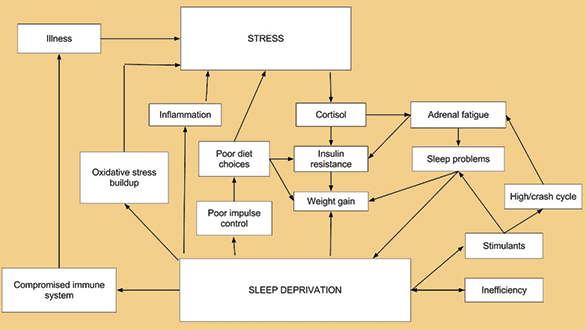
Your hormonal system is one of the major victims of chronic stress. In healthy circumstances, your body maintains a balance between stress and relaxation, regulated by the cycle of two hormones: cortisol (which stimulates wakefulness) and melatonin (which causes sleep). Cortisol and melatonin
naturally fluctuate during the day in a cycle known as your circadian rhythms – cortisol peaks in the morning and dips in the evening, when melatonin takes over during sleep.
By stimulating continuous production of cortisol, chronic stress causes imbalances in your hormonal cycle and disruption of your circadian rhythms. Instead of giving way to melatonin in the evening, cortisol stays high, leaving you lying awake worrying because your body never got the signal to wind down and prepare for sleep. Even if you do fall asleep, elevated cortisol can disrupt the rhythms of your natural sleep cycle, making your sleep not as restful. Sleep deprivation it itself a stressor, so the cycle becomes self-perpetuating.
Another way chronically high cortisol disturbs your hormonal balance is by causing a condition called adrenal fatigue. In the short term, cortisol robs your digestive and immune systems of energy to give you a rush of strength: essentially, adrenal fatigue is the price you pay when your body extends this emergency trade-off into the long run. Both the elevated cortisol and the resulting sleep deprivation lower your immune system: you get sick more easily and take longer to recover. The long-term suppression of your digestive system also causes all kinds of problems. It harms the beneficial bacteria that support your digestive system, and contributes to and exacerbates gastrointestinal disorders like GERD, IBS, and even food allergies. And just when a poor diet will affect you the most, it’s hardest to maintain, since sleep deprivation decreases your self-control and makes you more susceptible to the siren call of junk food. As well as its immediate effects, adrenal fatigue can cause
thyroid problems and other hormone imbalances. Since illness and gut inflammation are themselves stressors to your system, this contributes to the cycle of stress generating more stress.
The sleep-stress cycle also affects your weight. Chronically elevated cortisol creates insulin resistance by maintaining a constant rush of glucose to your muscles. Insulin spikes in response, and eventually you become insulin resistant. Insulin resistance
causes weight gain – especially since cortisol is already signaling your body to store fat. Weight gain furthers the sleep/stress cycle, since being overweight is a risk factor for a condition called sleep apnea, which is when your sleep is repeatedly disrupted as you periodically stop breathing during the night. The resulting sleep deprivation, in turn, also contributes to insulin resistance – and on top of that, it stops your liver from processing fat, (causing your body to store the fat instead), and promotes weight gain by increasing your levels of ghrelin (the hunger hormone) and inhibiting production of leptin. The cycle of stress and sleep deprivation can also lock you into the cycle of weight gain.
Your body’s natural and hormonal responses aren’t the only driving factors in the sleep-stress cycle. Most people’s conscious reactions to stress and fatigue also continue it. On the simplest level of external response, chronic stressors in your life often drive you to skimp on sleep to deal with them – sometimes, that’s one reason why they’re stressful. A demanding job, a heavy college courseload, or a new baby can eat into your rest. And working through the fatigue the next day can make you inefficient, meaning that you need even more time to get everything done, and forcing you to stay up even later to finish.
Many people also choose to handle their sleep deprivation by loading up on stimulants – Starbucks didn’t get so successful because we’re all well-rested and content with our lives. Caffeine, most people’s stimulant of choice, blocks receptors for adenosine, one of the inhibitory hormones that balance excitatory hormones like cortisol and adrenaline. Caffeine makes you feel less tired by disrupting your body’s natural cycle of wakefulness and sleepiness. But caffeine doesn’t solve the problem; it just masks it – and, like any other drug, your body eventually becomes resistant and starts to need more and more. Too much caffeine can start to disturb your rest even when you do want to sleep, forcing you to rely on even more coffee the next day. Caffeine overload thus creates another self-perpetuating cycle of sleep deprivation and hormonal derangement.
The problems listed above would be bad enough, but the sleep/stress cycle also generates all kinds of miscellaneous disorders. As if your body needed another problem at this point, both sleep deprivation and your hormonal response to chronic stress cause systemic inflammation, a contributing factor for heart disease and kidney problems. Sleep deprivation also reduces your body’s capacity to handle oxidative stress, the harmful buildup of junk proteins in your cells that drives the aging process. This means that sleep debt
imitates aging, with all of its associated functional problems. Even beyond the physical consequences, sleep deprivation impairs your memory and basic cognitive functions, and can contribute to mood disorders like depression.
Breaking the Sleep-Stress Cycle
Sleep deprivation and stress derange every major system in your body and feed off each other in a cycle that can make the most energetic person miserable. Robb Wolf
sums it up: “how you feel when you are sleep deprived is likely how you will feel if you are both diabetic and old.” Nobody wants to stay stuck in this cycle – but in the context of the modern world, breaking it can pose a seemingly insurmountable challenge. Fortunately, since every part of the cycle builds on all the other parts, every small change can create a ripple effect, giving you more energy and motivation to stay on track.
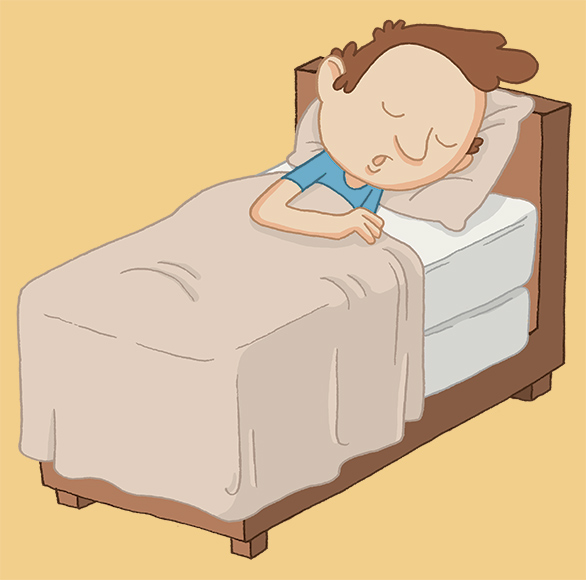
Since many of us have more control over our sleeping habits than our stress load, making sleep a priority can be one way to break into the cycle. First and foremost, make sleep a priority – more important than the dishes, more important than the laundry, and definitely more important than reruns of Battlestar Galactica. You will never “have time.” You have to make time. Commit to eight hours as a start, and adjust as needed. Consider creating a nightly routine to keep yourself on track, so you don’t get caught off-guard trying to finish five different chores in the last ten minutes before bed.
It’s not just the amount of sleep you get that matters: timing counts, too. One way you can reduce the damage of stress and sleep deprivation is to support the natural pattern of your circadian rhythms. The 24-hour cycle of light and darkness controls the cycle of your hormones – you evolved to react to approximately 14 hours of darkness every day, but most of us spend all our waking hours in some kind of light, with our experience of darkness compressed into the short window when we’re actually sleeping. While it’s probably impractical to stop work when the sun sets, you can still minimize the damage. Of all the colors on the spectrum, blue light most strongly stimulates your body to stay awake – avoid it for at least an hour before bedtime. If you use your computer in the evenings, consider downloading
f.lux to shift your screen over to the red spectrum.
All kinds of other cues also affect your circadian rhythms, although not as strongly. Food and exercise also affect the cycle of wakefulness and sleep; the effect is strong enough that one self-experimenter found that
intermittent fasting helped reset his circadian rhythms. Sound cues like birdsong also trigger your body to begin the process of waking up. Even the rhythms of the people around you can affect yours, another reason to encourage everyone you live with to join you in your quest for healthy sleep patterns.
When you make an effort to respect your natural circadian rhythms, your sleep patterns may not adhere to standard expectations of eight uninterrupted hours. Some research points to the conclusion that we naturally fall into a “biphasic” sleep pattern: 4 hours of sleep followed by a brief period of wakefulness, and then four more hours of sleep. And you don’t only have to sleep at night: even though they can’t replace a solid night of sleep, naps can help – and they certainly don’t hurt. As your hormones regain a healthy balance, you’ll become more aware of the best sleeping pattern for your body.
Besides respecting your natural rhythms, practicing good sleep hygiene can go a long way towards reducing insomnia and making your sleep as restful as possible. Sleep hygiene doesn’t just refer to when you last washed your pillowcase. It means making your sleep environment as uncluttered and restful as possible. Your bedroom should be dark and quiet – use heavy curtains or a sleep mask to block out ambient light from streetlights and your neighbors’ windows, and turn off any flashing electronic gadgets. If you hear any ambient noise, invest in a set of earplugs. Keep the room at a comfortable temperature – many people prefer to sleep in a cooler room.
Your bed itself plays a huge role in your quality of sleep: make sure to find a mattress you feel comfortable on. Some people feel more comfortable sleeping on the floor, a practice that makes sense from an evolutionary standpoint but might not have definitive health benefits. Whatever surface you prefer to sleep on, do pay attention to your sleeping posture.
Diet can also contribute to healthy sleep patterns. Eating too close to bedtime can keep you awake, but if you have trouble falling asleep hungry, make sure to eat enough at dinner, so you still feel full at bedtime. Make sure you get enough
fat, carbohydrates, and Vitamin B6. Any drugstore carries a whole shelf of sleeping pills, but avoid these unless you’ve exhausted all other options: many of them have such serious side effects that they can do more harm than good, and a healthy person shouldn’t need them.
Fixing your sleep patterns can help you break into the sleep/stress cycle, but you should also pay attention to reducing and managing your stress. Stress can be harder to approach directly, because many of us have little to no control over at least one major stressor in our lives. If you can get rid of stress in your life, by all means do so. Stress caused by your own behavior is an easy target: stop overtraining, and eliminate dietary factors like gluten that produce stress through systemic inflammation. But for stressors beyond your control, you’ll probably have to focus on stress management instead.
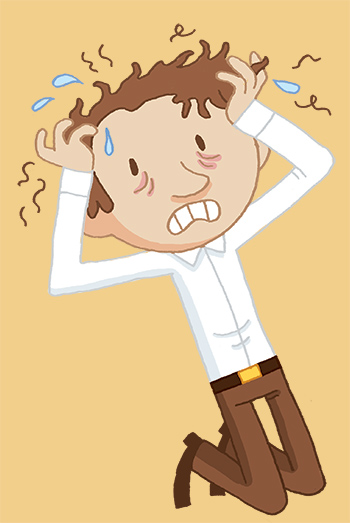
There are as many stress management techniques in the world as there are people under stress. One popular method is meditation. Meditation can stimulate the relaxation response, the cycle of inhibitory, calming hormones that chronic stress suppresses. Meditation can be as simple as closing your eyes and deliberately relaxing the tension in your body one muscle at a time – it doesn’t have to involve ritual chanting, complicated poses, or a state of total serenity. The
Body Scan meditation by Malcolm Huxter is a great guide for beginners attempting this for the first time – it walks you through your body one area at a time. The Zen Mountain Monastery also provides a
guide to getting started with meditation, including a set of useful photos of proper posture in various positions. Meditation takes many forms – experiment with different positions, music, mantras, and lengths to find something that leaves you feeling calmer and more peaceful.
If you do better with a more concrete activity, try creating a gratitude list, keeping a humor journal, or writing about your stress – journaling can help organize your thoughts and release some of the tension. You can get creative with writing, too – go ahead and write out that scathingly witty email you’d love to send your crazy boss – on a sheet of notebook paper to laugh over later.
Regular activity can also help reduce stress. While overtraining contributes to chronic stress, making a habit of
healthy exercise keeps your body strong and resilient. In the moment, a brisk walk can help you disengage and get some perspective on a stressful situation, making it easier to handle. Diet, of course, also plays a role: as well as cutting out foods that cause stress, make sure you’re getting enough antioxidants and nutrients. Taking a probiotic can help alleviate the damage that cortisol does to your gut flora. While “comfort foods” like ice cream and pizza will do more harm than good, a healthy diet can go a long way towards managing your stress.
Communications technology has become so pervasive that many of us don’t even realize how much it taxes our system with constant demands to pay attention to each new thing. Deliberately disconnecting from the constant cycle of stimuli can also help reduce your stress. You might need a smartphone for your job, but turn it off when you get home, and don’t check your work email until you’re back in the office. A
media fast can restore some sanity if your blog reader or Netflix queue is out of control: it takes discipline to disconnect, but the result is worth it.
An exhaustive list of every useful stress management technique could fill an encyclopedia. Evaluate your own situation: what exactly is the stressor? Within the context of your particular situation, how can you change the stressor, change your response, or distance yourself enough to make the stress manageable? Sometimes just evaluating the situation and making a plan can help – if you’re stuck in a bad job, for example, updating your resume and firing off a couple applications can make you feel less victimized and more proactive.
Conclusion
Chronic stress is a modern monster. In some ways, the sleep/stress cycle can be even harder to tackle than the modern diet because it involves a drastic change in the most basic rhythms of your life. You can bring Paleo food to work and share a meal with a table full of coworkers chowing down on pasta and Big Macs, but there’s no way to join in a late-night video gam e marathon if you’re busy getting enough sleep to wake up refreshed the next morning.
Unfortunately, beating chronic stress and getting the sleep your body needs are as important as they are difficult. The hormonal imbalances and metabolic derangement of the sleep/stress cycle can do every bit as much damage as a diet full of
sugar and gluten – and stumbling around in a constant haze of nervous exhaustion is no way to spend your life. Find a combination of stress management techniques that works for you, and make a commitment to reclaiming your sleep from the endless series of demands on your time.







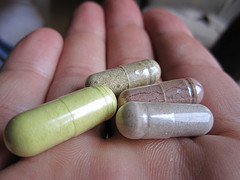 Also consider that the established RDA is based on people eating a standard western diet and that those people will likely need much more of some nutrients to cover for the damage done by other foods.
Also consider that the established RDA is based on people eating a standard western diet and that those people will likely need much more of some nutrients to cover for the damage done by other foods.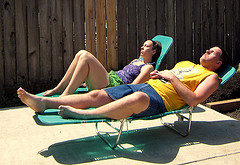 Unless you eat plenty of wild caught oily fish and get plenty of sunlight exposure, chances are you would benefit from more vitamin D. I prefer opting for more sunlight and oily fish, but a supplement is not a bad idea if you find it more convenient. Between 1,000 and 4,000 IU of vitamin D3 in gel caps seems to be the ideal.
Unless you eat plenty of wild caught oily fish and get plenty of sunlight exposure, chances are you would benefit from more vitamin D. I prefer opting for more sunlight and oily fish, but a supplement is not a bad idea if you find it more convenient. Between 1,000 and 4,000 IU of vitamin D3 in gel caps seems to be the ideal.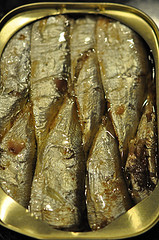 It’s not important to get high amounts of omega-3, but it’s really important to balance omega-3 and omega-6 consumption. Again, the goal is not to eat more and more omega-3 fats, but less and less omega-6. Don’t go overboard and try not to have any thought, they are essential fats after all. If you eat 100% paleo without cheat meals or eating out and you eat fatty fish and pastured meat while limiting nuts, you probably don’t even need a fish oil supplement. If, on the opposite side, you more or less frequently consume more omega-6 fats than our ancestors would have, you would probably benefit from either eating more wild oily fish or 1 or 2 grams of high quality fish oil per day.
It’s not important to get high amounts of omega-3, but it’s really important to balance omega-3 and omega-6 consumption. Again, the goal is not to eat more and more omega-3 fats, but less and less omega-6. Don’t go overboard and try not to have any thought, they are essential fats after all. If you eat 100% paleo without cheat meals or eating out and you eat fatty fish and pastured meat while limiting nuts, you probably don’t even need a fish oil supplement. If, on the opposite side, you more or less frequently consume more omega-6 fats than our ancestors would have, you would probably benefit from either eating more wild oily fish or 1 or 2 grams of high quality fish oil per day.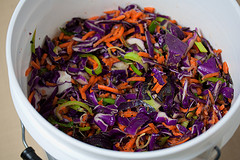 I want to stress the importance of probiotics over the two favorite nutrients of the Paleo diet community; Vitamin D and omega-3. I think probiotics need a special attention because it’s much harder to get it the natural way nowadays. There where no antibiotics and nothing was sanitized in the time of our ancestors. They also ate dirt all the time. Today, everything is sanitized and antibiotics are everywhere, even in the meat we eat.
I want to stress the importance of probiotics over the two favorite nutrients of the Paleo diet community; Vitamin D and omega-3. I think probiotics need a special attention because it’s much harder to get it the natural way nowadays. There where no antibiotics and nothing was sanitized in the time of our ancestors. They also ate dirt all the time. Today, everything is sanitized and antibiotics are everywhere, even in the meat we eat.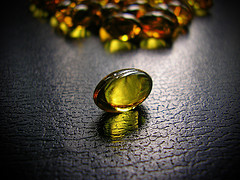 If, after considering those guidelines, you decide you’d like to go with those three supplements (Vitamin D, Omega-3 and probiotics), I can recommend a good product,
If, after considering those guidelines, you decide you’d like to go with those three supplements (Vitamin D, Omega-3 and probiotics), I can recommend a good product, 










